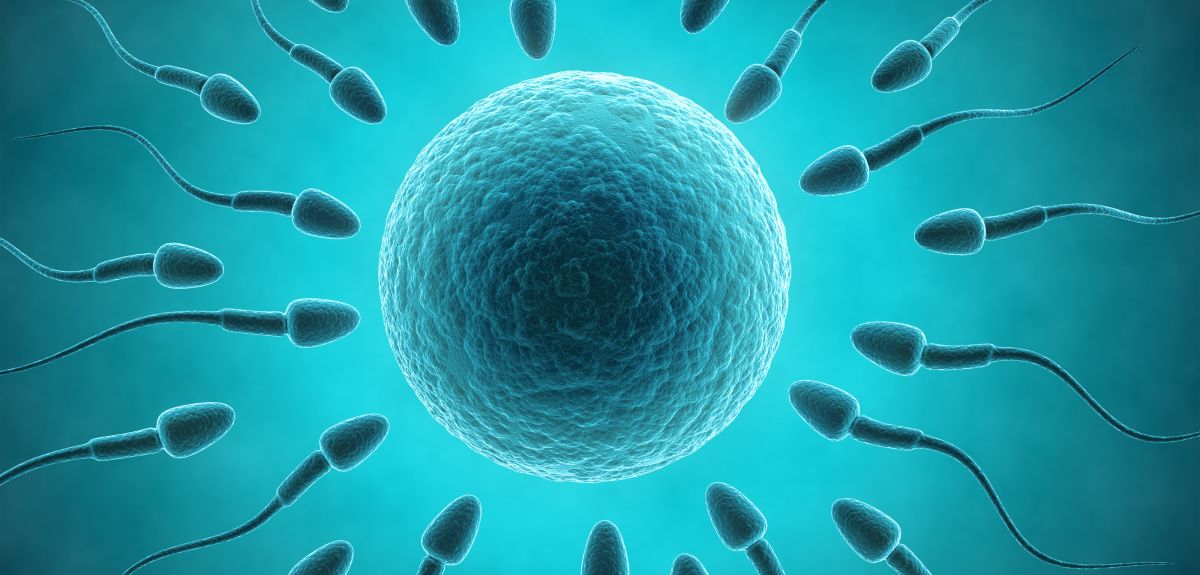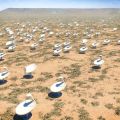
Image credit: Shutterstock
Making sense of sex: why genes recombine
Sexual reproduction produces new combinations of genes, a process that is thought to prevent the accumulation of harmful mutations. A study in Nature Genetics now provides the first experimental evidence that recombining genes stops harmful mutations from piling up in humans.
I talked to the lead researcher, Dr Julie Hussin at the Wellcome Trust Centre for Human Genetics, about the evolutionary biology of sex.
OxSciBlog: Why is the evolution of sexual reproduction still a bit of a puzzle for researchers?
Julie Hussin: Well, because asexual reproduction just makes more sense!
If an organism has got to the stage where it can reproduce, its genes are clearly sufficiently adapted to the environment that it can survive.
From this point of view, it doesn't make sense why you'd risk mixing your genes to make a new, unproven genome, when the genome you already have has been proven to be good enough to survive.
OSB: So what advantage might sexual reproduction offer to a biological organism?
JH: Many decades of theoretical work show that when genes are not mixed together to make new combinations, over many rounds of reproduction mutations which are only slightly harmful slowly begin to accumulate in the organism's genome.
Over time, this can potentially drive the species to extinction.
Sexual reproduction is one way of ensuring that recombination happens each time the organism reproduces, preventing the accumulation of genetic defects.
OSB: You've mentioned that this rationale for sexual reproduction is supported by theoretical work: is there previous experimental evidence supporting it?
JH: Experimental evidence is much thinner, and there has been none in humans.
The problem with demonstrating that human recombinations have an effect on genetic mutations is that they affect mutations that are very rare in the population. The impact of recombination on the accumulation of these mutations is thus detectable within whole populations, rather than in single individuals.
So to find them, we not only needed very large sample sizes, but also data across the whole genome.
It is only recently that we have had the technology to get large-scale genomic data from many, many people: we used high-coverage gene sequencing data from over 1,400 people, collected by the 1000 Genomes and the CARTaGENE projects.
Using this data, we have shown for the first time that recombination rates have an effect on the accumulation of harmful mutations in humans.
OSB: How did you use this data?
JH: The rate of recombination is actually not uniform across the human genome, and rates vary quite dramatically across genomic regions.
So we compared how many mutations had accumulated in regions of the genome where there is a lot of recombination ('hotspots'), versus regions where the recombination rates are low ('coldspots').
Our thinking was that if recombination discourages the accumulation of harmful genetic mutations, then there will be a difference in the proportion of harmful mutations there are in the 'hotspots' versus the 'coldspots'.
OSB: What did you find?
JH: Exactly that: genome regions where the recombination rates are low had many more harmful and disease-associated mutations, compared to genomic regions with high rates of recombination.
What was a surprise was that the genes in the coldspot regions were more likely to be involved in really essential processes, such as DNA repair and cell maintenance. Mutations here were particularly likely to affect the health of people carrying the mutation.
OSB: Why are genes for essential functions located in regions where it turns out that there is greater chance of a harmful genetic mutation?
JH: We don't know.
But it is possible that there is a greater cost for a 'bad recombination event for these genes.
Very occasionally, recombining genes can result in a deleterious variation. When this happens for a very essential gene, the cell simply dies.
From an evolutionarily perspective, genes for essential cellular functions are very old: they evolved millions of years ago, and they've been handed down to many organisms because they clearly work.
So it makes sense not to 'mess' too much with them, and this could be why they're in coldspot genome region.
In contrast, genes in charge of the immune system and immune responses are mainly found in hotspots.
These are relatively new functions: perhaps the new variants that gene recombinations yield are still required here, to better adapt to the environment.
OSB: Did you also find genetic differences between the different human populations you looked at?
JH: Yes!
In older, larger populations, we found a much smaller difference in harmful mutation accumulation in the coldspots versus the hotspots.
For example, we had data from the French-Canadian population, which was established only 400 years ago. It started with only 8,000 'founders', and it is still quite small.
In contrast, as Africa is the birthplace of modern humans, the African populations we looked at have a larger effective population size, which means more people have contributed to the genetic diversity.
Although there is little evidence for a difference in the number of harmful mutations between human populations over the whole genome, the French-Canadian population had a larger proportion of harmful mutations in their genomic coldspots.
Many of these mutations were specific to the French-Canadian population: they were either rare variants which happened to be there in some of the 8,000 population founders, or they have originated for the first time since the founding of Quebec 400 years ago.
We found similar results for the Finnish and Tuscan Italian population we looked at.
So we think that the population history of a group of people can also have an effect on the pattern of harmful genetic variants.
OSB: Where is your research headed for the future?
JH: In this study, we ignored the X and Y sex chromosomes.
We know that the Y chromosome never recombines, and the X recombines only in females, so the patterns there are likely different and deserve further investigation.
We would also like to test the same theory in other mammals. The availability of recombination maps and large-scale population data in other primate species, for example, makes this possible in the near future.
 8 things about Oxford’s driverless tech
8 things about Oxford’s driverless tech A song of fire and ice in the ocean
A song of fire and ice in the ocean Bubble research rises to the top
Bubble research rises to the top Seashells and sediment: measuring oxygen
Seashells and sediment: measuring oxygen  Coming Soon: the Universe in 3D Widescreen
Coming Soon: the Universe in 3D Widescreen